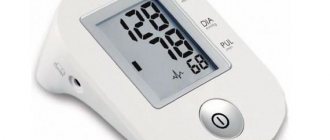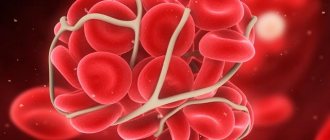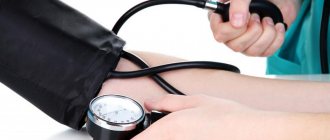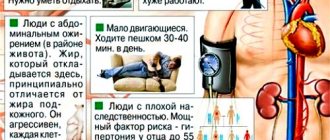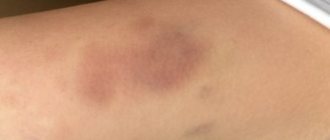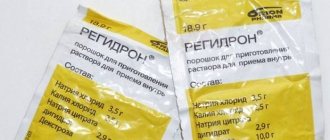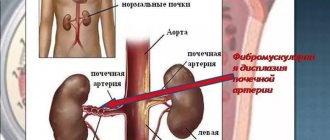- Could there be such pressure?
- What danger does 50/50 pressure pose?
- What symptoms might there be with such indicators?
- For what reasons does the pressure drop so much?
- What to do with such low pressure?
- What are the prognoses for a person?
- 50/50 in pregnant women
- In teenagers
- In the elderly
- How to prevent such a strong decrease in blood pressure?
Although it is believed that low blood pressure is less dangerous than high blood pressure, a 50/50 ratio is still a serious threat to the human body. The patient may faint, and delay in providing assistance is fraught with a sad outcome. The norm for a healthy person is 120 to 80, indicators of 50 to 50 indicate hypotension or diseases of the heart and blood vessels.
Could there be such pressure?
Before deciding on the indicators, it is worth clarifying what exactly the tonometer shows. The top is systolic pressure, and the bottom is diastolic, the difference should not be more than 40 units.
In the case of indicators of 50 to 50, the difference seems to be maintained, but at the same time they are significantly below the norm. If the numbers drop to 50 to 30, collapse will occur - a disruption of the blood supply to important human organs.
There are 3 types of arterial hypotension, in which values of 50/50 are occasionally possible:
- Orthostatic. The body is not able to properly regulate indicators on its own. A surge in pressure can occur even after a normal change of position.
- Postprandial. Blood rushes sharply to the arms and legs after eating, which leads to pressure changes. Indicates disorders of the endocrine system, changes in the brain and even mental disorders.
- Vegetative-vascular. More often found in adolescents. It confirms that there is a malfunction in the functioning of the heart and blood vessels.
Sometimes blood pressure can decrease during sleep, the reason for this is insufficient blood circulation, because the body switches to an economical mode in the dark. Often the wakefulness center begins to turn on to compensate for this condition, the patient wakes up and cannot fall asleep. Poor sleep, in turn, causes chronic fatigue, chills, and numbness in the arms and legs.
An attack of hypotension often occurs in a stuffy room or in a large crowd of people.
Why is this condition dangerous?
In most cases, a pressure of 120 over 50 poses a danger to the life and health of the patient, moreover than with classic hypotension with low systolic and diastolic pressure.
The following pathological conditions are possible and even probable:
- Stroke. Simply put, acute cerebrovascular accident. There are two types: ischemic, in which the nutrition of certain areas of the brain is disrupted (as a result, cerebral structures die) and hemorrhagic (hemorrhage into the structures of the brain). Perhaps both the first and the second.
- Myocardial infarction. Acute circulatory disorder in the heart muscle. Accompanied by severe changes throughout the body.
- Bleeding in the eyes. The so-called hemophthalmos. It poses a tremendous danger to visual function.
Other, unnamed phenomena, such as fainting and subsequent injuries, are also possible. To prevent dangerous consequences, it is recommended to promptly contact your doctor.
What danger does 50/50 pressure pose?
When the readings are both low, this indicates cardiogenic shock, when the heart is weak at pumping blood. At the same time, oxygen is distilled worse, oxygen starvation of the brain begins, and kidney function slows down. All this together is life-threatening.
If a sharp decrease in pressure occurs once, this may indicate a lack of fluid or a long stay in stuffiness. But if such cases begin to occur frequently, it is worth thinking about the reasons and undergoing a full examination.
A pressure of 50 to 50 may also indicate changes in the body such as:
- Shock . When there is a malfunction in the central nervous system, blood circulation, metabolism and breathing. The result is bleeding, dehydration, sepsis, and low cardiac output.
- Brain stroke. With age, low blood pressure in hypotensive people often transforms into high blood pressure, and such people endure these surges much harder than chronic hypertensive people.
- Hypoxia of internal important organs. This leads to impaired kidney function, varicose veins, chronic somatic diseases, inflammation and malignant tumors.
Each of the dangerous conditions requires urgent medical intervention!
Symptoms and clinical manifestations
Low diastolic pressure provokes a decrease in blood flow in tissues, which as a result do not receive enough nutrients and oxygen, their functional activity is disrupted, which slows down the removal of toxins from the body, leading to the accumulation of carbon dioxide. Cells of internal organs begin to die. Given the temporary nature of such disorders, no symptoms arise. In other cases, a person notes:
- constant nausea;
- vertigo;
- weakness;
- blurred outlines of objects;
- thirsty;
- cold extremities;
- pale skin;
- shortness of breath;
- fainting or loss of consciousness, fraught with injury.
What symptoms might there be with such indicators?
Hypotensive patients are characterized by constant yawning; this is a reaction to lack of air; black spots may appear before the eyes. They need more time to sleep and have difficulty waking up. Due to poor blood supply to the muscles, pain sometimes occurs in the joints and ligaments, which disappear when the person begins to move actively. After all, as soon as it is possible to disperse the blood, the pressure returns to normal. Hypotonic people are sensitive to weather changes, climate change, and this manifests itself in headaches.
Often people with low blood pressure feel good; such indicators are normal for them. But you still shouldn’t relax, because over time, unpleasant sensations may appear. In addition, low blood pressure often indicates the presence of other dangerous diseases.
Characteristic symptoms:
- severe weakness;
- lack of air;
- noise in ears;
- spots before the eyes;
- dizziness;
- severe yawning;
- low temperature;
- pallor;
- cold sweat;
- tachycardia;
- severe headaches;
- nausea, vomiting;
- difficulty urinating when urine comes out in small portions.
What to do?
If there is a decrease in heart pressure, it is not always possible to consult a doctor.
In such a situation, inexpensive but effective medications can help. Tinctures of ginseng, eleutherococcus, and lemongrass are effective . They are of plant origin and are practically harmless. They can be taken by both chronic hypotensive patients and people who occasionally encounter the problem.
Some foods can also help cope with low blood pressure. You can drink strong tea or coffee, eat something salty, for example, a couple of pieces of cheese. Some experts advise taking 50 grams of cognac if your blood pressure drops low.
At the first opportunity, you need to go to a cardiologist and undergo a comprehensive examination. Since cardiac or renal failure are common causes of low diastolic blood pressure, such patients are usually prescribed an ECG, ultrasound of the heart and kidneys. Once the diagnosis is made, treatment is carried out.
But you can’t do it with pills alone. To bring your lower blood pressure back to normal, you need to establish a strict daily routine.
The duration of night's rest should be at least 8 hours. It’s good if you can get some sleep during the day.
The room should be ventilated regularly, especially before going to bed. A very useful procedure for hypotensive patients is a contrast shower. It strengthens the walls of blood vessels, has a good effect on the heart and normalizes blood pressure.
The workplace should be organized with maximum comfort. In rooms that are poorly lit and ventilated, a person may experience headaches and lack of oxygen.
Hypotonic people benefit from eating nuts
Nutrition also plays an important role. The daily menu should be divided into 4-5 meals. It is worth making sure that the diet is varied and includes as many vitamins as possible. To support the body, it is advisable to buy a good vitamin complex.
Among the foods for low blood pressure, we can recommend sauerkraut, lean meat, nuts, and legumes. Potatoes, rye bread and dark chocolate in moderation are also healthy. When preparing dishes, you can use spices: pepper, cinnamon, curry.
An excellent choice for hypotensive people would be tonic drinks: pumpkin, carrot, and celery juice. Vegetable mixtures also bring great benefits.
For prevention, you can drink ginger decoction for a month, and the best drink on holidays will be dry red wine.
For what reasons does the pressure drop so much?
Doctors explain low blood pressure as physiological or pathological abnormalities. The first manifestations are more common in adolescents or young adults, this is due to genetic predisposition or the structure of the body. Hypotension is more common in women than in men.
A decrease in blood pressure can be caused by:
- food poisoning;
- stuffiness in the room or on the street;
- exposure to certain medications;
- long exposure to the sun in the heat.
If we are talking about pathologies that provoke hypotension, then this list includes the following diseases:
- acute infections;
- disruption of the endocrine system;
- vascular insufficiency;
- diseases of the nervous system;
- oncology;
- acute adrenal insufficiency;
- severe blood loss;
- kidney diseases;
- toxic shock;
- chronic fatigue, stress;
- exhaustion;
- dehydration;
- lack of vitamins;
- ulcer;
- diseases of the urinary system;
- problems with the heart and blood vessels;
- allergy;
- cervical osteochondrosis;
- infections;
- phlebeurysm;
A decrease in blood pressure can occur after severe stress or emotional stress.
Features of pressure 10050
In general, hypotension is diagnosed by repeatedly measuring values <120/80. Symptoms, however, only appear if the pressure is 100 over 50; this means that readings between 100 and 120 are usually tolerable without symptoms.
If the second value is very low, i.e. <50, it is advisable to check the condition of the heart, in particular to exclude valvular insufficiency.
Blood pressure of 100 over 50 is a problem that, according to experts, affects up to 25% of women under the age of 25. Fortunately, it does not pose any particular health risks. Quite the contrary. People with lower blood pressure, especially those with a resting heart rate of 50, are less at risk of serious cardiovascular disease and tend to live longer.
A pressure of 100 to 50 is “more favorable” for a person, but only until it begins to manifest symptoms such as:
- dizziness;
- fainting;
- chronic fatigue;
- constant lack of energy;
- difficulty concentrating.
These symptoms are most pronounced when the pressure is 100 to 50 and the pulse is 100. The reason for this is a slowdown in blood circulation in the vessels of the brain, and therefore a lack of oxygen and other nutrients.
Hypotension can signal other, more serious diseases, in particular, a disorder of the thyroid gland, anemia. A pressure of 95–100 over 50 sometimes accompanies infectious diseases.
In cases where low blood pressure is only a symptom of another disease, the symptoms disappear after the underlying disease is cured. Otherwise, that is, with the primary form of hypotension, the cause remains unidentified. Unfortunately, most people suffer from this type of disorder.
Important! Along with low blood pressure, a weakening of the vascular walls occurs, manifested by the appearance of bruises. . Blood pressure 100/50 in children and adolescents
Blood pressure 100/50 in children and adolescents
Blood pressure in children is significantly lower than in adults. Its indicators are affected not only by age, but also by height and body weight. Like adults, children need to monitor the values and monitor whether hypertension develops. The same applies to low blood pressure. Despite the fact that indicators of 100 to 50 in a child, similar to an adult, are not life-threatening, they can cause unpleasant symptoms.
Hypotension often occurs in adolescents during puberty, more often in thin and tall children. Why is this happening? A child’s body is not developed enough to quickly adapt to changes in the state of the body and the environment (such changes occur all the time, people just don’t notice it).
In case of persistent difficulties, it is necessary to consult a pediatrician - if the child is prone to fainting several times a day, the problem should be addressed, since there is a risk of injury due to a fall.
Blood pressure 100/50 in old age
The problem of low blood pressure is common in older people and may be the result of excessive blood pressure lowering by medications. In this case, we speak of orthostatic hypotension. Symptoms occur primarily when there is a change in position - when a person gets up quickly, their circulation cannot cope with the sudden change.
For low blood pressure caused by certain medications, always consult your doctor. He will advise what to do if the pressure is 100 to 50, how to change therapy, what medications should be used.
At the same time, it is good to conduct studies aimed at excluding the connection between hypotension and a thyroid disorder.
Problems can also be caused by drug treatment of mental problems, depression, and the use of sedatives and sleeping pills.
Blood pressure 100/50 during pregnancy
Hypotension can occur in women during pregnancy. A growing child somewhat disrupts the functioning of the circulatory system - due to the blood supply to the fetus, blood may not reach other organs. Low blood pressure often manifests itself in the 1st half of pregnancy, then the condition returns to normal. Recurrence of hypotension is possible in the 3rd trimester.
What to do with such low pressure?
When blood pressure drops significantly, it is important to quickly bring a person to a normal state and improve blood circulation. Oxygen therapy and drugs that nourish the heart help.
First aid for low blood pressure:
- Lay the patient down so that his legs are higher than his head.
- Relieve headaches with painkillers.
- Give access to fresh air.
- Call an ambulance.
Drug treatment for an attack:
- Prednisolone injection, if there is no effect - metazone.
- Droppers with norepinephrine, adrenaline, dopamine.
- If the attack is provoked by acidosis, sodium bicarbonate is administered intravenously.
The dosage is calculated individually!
Treatment of bedridden hypotensive patients:
- Dopamine injections with sodium chloride solution.
- With a sharp decrease in pressure - cordiamide, tonocard, hyperterzin, norepinephrine, ephidrine.
For chronic hypotension, medications are prescribed that activate the vasomotor center of the brain. If necessary, mineralocorticoids are also prescribed.
The doctor selects the tablets from the list, taking into account the patient’s condition and the presence of other diseases.
Recommended drugs:
- citramon;
- piracetam;
- ephedrine;
- Algon;
- Eleutherococcus;
- panangin;
- hypotensin;
- glutamic acid;
- potassium orotate;
- vitamin B.
Treatment
Since isolated hypotension itself is secondary in most cases, it is necessary to treat the underlying disease that caused the pressure of 120/50. Then the tonometer readings will return to normal.
Symptomatic treatment consists of taking certain medications (Citramon, aspirin) in doses determined by the doctor.
A pressure of 120 over 50 means that a pathological process is occurring in the body, and as a special case of diastolic hypotension requires mandatory treatment. All activities are agreed upon with a specialist.
The prognosis is favorable in most cases. It is important to show attention and persistence.
In teenagers
Hypotension is often diagnosed in adolescents; this is due to hormonal changes in the body. Indicators depend on gender, age, emotional state. An examination is necessary to rule out serious disorders such as electrolyte imbalance, heart disease and kidney disease.
Features of low blood pressure in teenagers:
- The lower readings at 50 indicate a violation of the tone of the vascular walls.
- The upper readings at 50 indicate severe stress and strain.
In children under 7 years of age, readings of 80 to 50 are the norm, if there is no deterioration in general health.
Blood pressure 120 over 50 - what does this mean?
Experts believe that the most favorable pressure for a person is 120 over 80. Deviation from the norm does not always indicate any pathology, but it all depends on how strong the deviation is. If we talk about the numbers 120 by 50-55 units, then we can say that you should not postpone your visit to the doctor.
For more accurate blood pressure measurements, it is better to use a mechanical tonometer.
A lower reading of 50 may indicate arrhythmia, blockage of the pulmonary artery, the development of a heart attack, an allergic reaction and other dangerous diseases. The numbers can vary, for example, 127 to 57 or 129 to 59; such a difference between upper and lower pressure in most cases indicates the development of some pathologies.
If blood pressure units drop below 50, you should immediately call an ambulance and not tempt fate. Too much “spread” between the lower and upper pressure can occur due to severe stress, kidney disease and other ailments.
Note. Indicators of normal blood pressure 120 over 80 are quite arbitrary. Each person has his own normal limit. It depends on the characteristics of the body, age and other factors.
In the elderly
In elderly patients, a different picture may appear: the lower pressure is high, and the upper pressure is slightly elevated. This is due to the fact that blood vessels lose elasticity with age, and less blood enters them when the heart contracts. If the indicators are 50 to 50, treatment and sleep for at least 10 hours are necessary. Hypotonic patients should not get out of bed abruptly in the morning, so as not to provoke a surge in blood pressure.
Constant consumption of coffee can cause a large dilation of blood vessels, and the pressure will drop even more.
Symptoms
If heart pressure is low, a person feels tired, unwell, and his memory worsens. There is often dizziness, tinnitus, and darkness before the eyes. Possible vision problems
There are other signs of low diastolic pressure:
- sudden attacks of weakness leading to fainting;
- nausea and vomiting for no apparent reason;
- feeling of lack of oxygen;
- constant chills, sensitivity to weather changes;
- heart pain, rapid heartbeat.
When the lower pressure is 50 or less, this also affects the patient’s psycho-emotional state.
He becomes irritable, moody, and worries about everything. Neuroses, depression, and attacks of tearfulness often occur.
